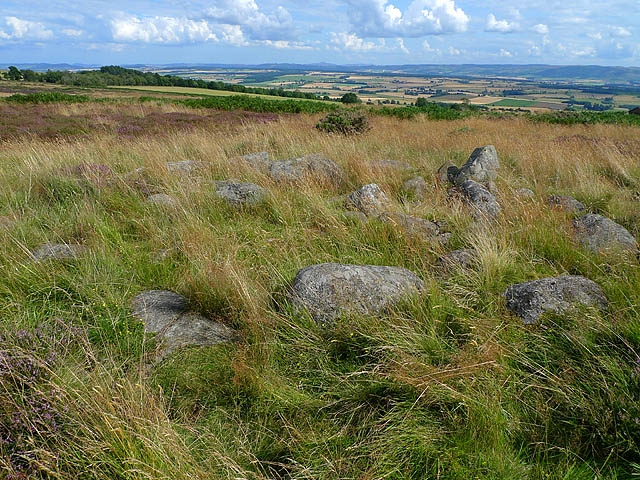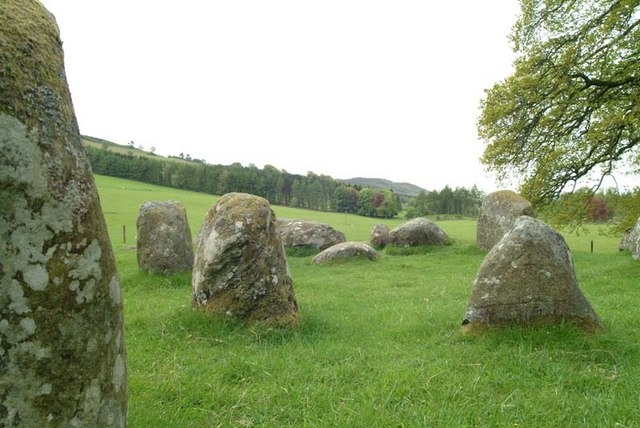
Only about five miles further east is the village of Fowlis Wester. We've completely driven through before we realize "that was it." Turning back, we search the atlas looking for the little symbol that denotes ancient monuments. There's really only one road that this mysterious moor with monoliths can be located on, so we make the turn. It immediately changes to a single track road, complete with the requisite sheep on the verge.
Robin drives slowly as Dana and I scour the hillside with our eyes, looking for any hint of a standing stone. After driving for some time, the road levels out, affording a wonderful view of the countryside – but no standing stones. Robin stops the car and we study the map again.
At this time, something straight out of a science fiction movie occurs. The windows of the car seem to be all at once covered with flies – dozens and dozens of flies; not the nasty dung flies that we became so accustomed to in England, but ordinary houseflies. They are so thick on the glass we can barely see out. We can hear the hum of their wings as they jostle for position.
Displaying her typical spunk, Robin steps out of the car to get a closer look at an indistinct figure in the distance. It looks like it could be a standing stone, but the only way to make sure would be to climb a fence and hike across a sheep-filled pasture (not to mention braving the swarm of flies that are eerily attracted to us). On the other hand, the remains of an old stone house are directly next to this short column; it could just be the flue of a fireplace.
We decide that perhaps we've missed it and drive slowly back down the hill. At the foot of the hill there's a huge oak with a circle of stones arranged around the trunk on which sheep laze in the shade. Hmm ... is this it? It seems doubtful.
Shrugging our shoulders we decide that the writer of the site on Ancient Scotland where we'd originally located information about Fowlis Wester must really know the countryside like the back of his hand to have located wherever these stones lie.
We have dinner plans for the evening with friends of Robin's in Culross, and more to see before then. We are miles and miles away from where we need to be in a few hours, so chalk this one up as "too bad we couldn't find what we were looking for, but it was a nice drive through beautiful countryside."

A stone circle is a monument of stones arranged in a circle or ellipse. Such monuments have been constructed in many parts of the world throughout history for many different reasons. The best known tradition of stone circle construction occurred across the British Isles and Brittany in the Late Neolithic and Early Bronze Age, with over 1000 surviving examples.
Stone circles are usually grouped in terms of the shape and size of the stones, the span of their radius and their population within the local area. Although many theories have been advance to explain their use, usually around providing a setting for ceremony or ritual, there is no consensus among archaeologists as to their intended function.
Read more about Stone Circles at Wikipedia.